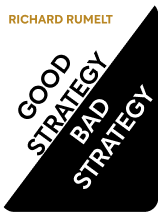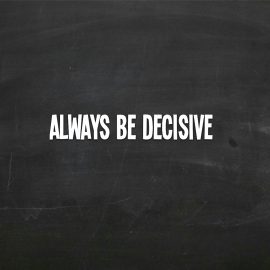

This article is an excerpt from the Shortform book guide to "Good Strategy Bad Strategy" by Richard Rumelt. Shortform has the world's best summaries and analyses of books you should be reading.
Like this article? Sign up for a free trial here .
Do you keep up with industry trends? What type of industry change do you anticipate in the near future? Do you have an action plan on how to reorient your organization accordingly?
As technological, political, and economical landscapes change, so too do the industries that operate within them. Fundamental changes to an existing industry structure can upend existing competitive dynamics and create valuable opportunities for those who are tuned in and ready to exploit them.
In this article, we’ll take a look at the common sources of industry change (rising resource costs, deregulation, and technological advances) and how to anticipate their effect on your business.
The Tides of Industry Change
In planning your strategy to position your organization so that competitors will have an uphill battle overtaking it, anticipate fundamental shifts in the landscape and exploit them before others do.
Fundamental industry changes can come from many sources:
- Rising resource costs often trigger change, leading to consolidation when only large competitors with economies of scale can afford the higher charges. For example, when color film was introduced, smaller firms that couldn’t afford the research and development they needed to keep up with consumer standards were forced out of the market, and the industry consolidated around a few large players like Kodak and Fuji.
- Deregulation also triggers change. When a government changes the rules for industries like aviation or banking—allowing new competitors and removing price protections, for example—the competitive terrain shifts and opens up opportunities for those who are alert to them. (Companies who enter these markets can do very well, because industry incumbents, often subsidized by their governments for years, are typically operating inefficiently and are slow to adapt to the influx of competition.)
- Other sources of change include technological advances (for example, the creation of smaller microprocessors), shifting politics (for instance, that might favor one branch of the military over another), and changing buyer preferences (such as might favor SUVs over sedans).
To effectively exploit such changes, you need to predict how your industry or the wider landscape will evolve because of them, and then divert resources, energy, and innovation accordingly. Additionally, you need to react to the changes early in their development, before your competitors have had a chance to establish their dominance in the new landscape.
Look not only for direct effects of changes but also for secondary effects, which may be equally profitable but less initially obvious. Any company taking advantage of less obvious knock-on effects of a change may have less initial competition—a significant strength.
For example, the advent of television in the 1950s brought free, accessible entertainment into peoples’ homes. Established film production companies had, until then, made money on a steady stream of mediocre movies, but competition from the free, in-home entertainment provided by television meant that by the 1960s, movie audiences had shrunk significantly. What ultimately revived the movie industry was a shift to independent films, whereby studios financed independent producers and directors to create higher-quality movies that would entice audiences into the theaters again. Thus, the rise of an independent film industry became a secondary effect of the technological change of television.
Avoid These Wrong Assumptions
Sometimes it is easy to see when a change is happening but not so easy to figure out what the repercussions will be: how it will affect your industry or the wider landscape. There are three common assumptions people make when assessing change that lead them to wrongly forecast the fallout from those changes:
1. People don’t correctly predict the eventual flattening of a new surge in demand. For durable goods—televisions, printers, phones—sales typically follow a predictable trajectory of sharp initial growth followed by a slowdown as everyone who wants the product acquires one. As a product category matures, sales eventually will hew closely to population growth and replacement rates.
Unfortunately, when making budget projections, corporate strategists often prefer to ignore this reality. Unfounded optimism and an unwillingness to admit there’ll be an end to their good fortune leads many strategists to plan for infinite growth, which never holds up to expectations and can therefore lead to unrealistic action plans.
2. People assume existing market leaders will be the primary contenders in a changing landscape. While this is sometimes true, very often an outsider is able to take advantage of a structural change more efficiently than an incumbent.
For example, in the last decades of the twentieth century, the computing industry began to consolidate with the communications industry. Most corporations and government agencies assumed the resulting battle for dominance would pit the two existing industry giants, AT&T and IBM, against each other. However, other players entered the ring and completely shifted the dynamic, bringing with them new software, the microprocessor, the decentralization of computing, and the Internet—elements that AT&T and IBM were not prepared for.
3. People assume that after a transition, the future winners will have business models very similar to those of the current dominant players. People fail to see how fundamentally changes will alter the ways companies conduct business. For example, when the Internet became prominent in the late 1990s, people assumed companies like AOL would dominate with their “protected portals” to the internet, herding their users toward a curated set of web pages. People did not account for the way the sheer scale of the Internet would obviate the need for such curation.
Recognize the Ideal State
When assessing change and predicting how it will play out, try to visualize the “ideal state” of an industry: the way an industry would work if it met the needs of customers as efficiently as possible. This will usually reveal the ultimate direction of an industry, as organizations generally evolve towards, not away from, efficiency, and buyers are innately drawn to solutions that meet their needs with the least amount of trouble.
An example of a company properly anticipating an industry’s ideal state was Cisco and its strategy of “IP everywhere” in telecommunications. The company envisioned that all packets of data would be coded into IP (Internet Protocol) and could be read by individual devices plugged into the Internet network. This was in contrast to the then-current but more complex system of “smart” networks that read the data first and then delivered it to the end user’s device. Recognizing the efficiency of “IP everywhere” allowed Cisco to overtake the established players in the field. Unfortunately, leaders sometimes are blind to the ideal state because it is based on overall efficiency, while they tend to focus on their own company’s particular ambitions. For example, the music producers and distributors that dismissed the disruption posed by digital music service Napster failed to see how enthusiastically customers would embrace a system where they could download, copy, and email a song as a file. The incumbents, focused on protecting the system that had benefited them for so many years, ignored the ideal state of the industry until they had to play catch-up with their own digital innovations in order to stay competitive.

———End of Preview———
Like what you just read? Read the rest of the world's best book summary and analysis of Richard Rumelt's "Good Strategy Bad Strategy" at Shortform .
Here's what you'll find in our full Good Strategy Bad Strategy summary :
- The essential components of good strategy and the faulty thinking behind bad strategy
- Specific and measurable techniques for designing a focused strategy for success
- How to overcome challenges and gain a competitive edge





